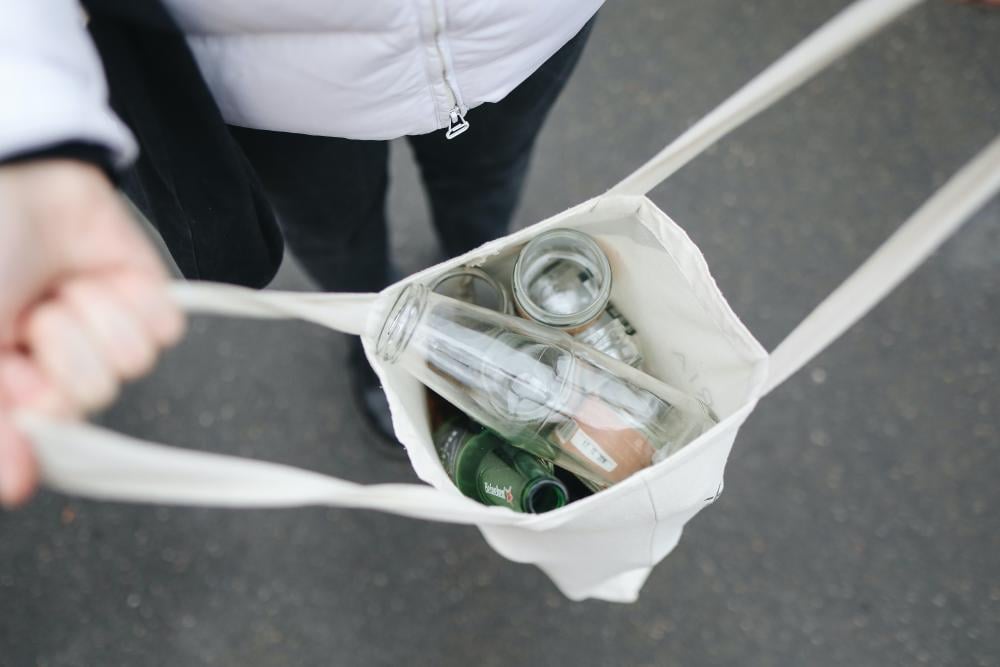
Recycling can appear to be a difficult and time-consuming task. Every city and state operates its recycling centers differently, so it's crucial you learn about recycling in your community. Meanwhile, getting to know what items you should and should not recycle is really important. So in this article, I'm going to share with you some information about Recyclable Material: What can and cannot be recycled?
The world's natural resources are limited, and some are scarce. Recycling paper and wood can conserve trees and forests, recycling plastic means less new plastic, recycling metals means less mining, and recycling glass decreases the consumption of new raw materials like sand. Of fact, the reality is far more complicated, but the basic process remains valid. Metals, for example, are repeatedly recyclable while retaining the majority of all of their qualities.
Recycling lowers the need for new raw materials to be grown, harvested, or extracted from the Earth. This, in turn, decreases the harmful disruption and damage done to the natural environment, which means fewer trees are cut down, rivers are diverted, wild creatures are damaged or displaced, and pollution is reduced.
It's also far preferable to recycle old products than to devastate someone else's town or land in quest of fresh raw materials. Because of the increased demand for new commodities, more of the poorest and most vulnerable individuals have been driven from their homes or otherwise exploited.
Making things out of recycled materials often consumes less energy than making them out of new raw materials, sometimes by a significant amount.
Newspapers, office paper, magazines, and corrugated cardboard are all examples of mixed paper recyclable resources. Gift wrapping paper can even be recycled if it does not have a plastic film coating on the top. Paper recycling is one of the most basic and widespread types of recycling.

Other Recyclable Materials could be Metals. Metal recycling is divided into two major categories: aluminum and steel. Consider Coke cans as an example of aluminum. Soups, sauces, beans, and fruit are frequently stored in steel cans. These cans' lids are also recyclable. If you're not sure how to tell them apart, keep this in mind: Aluminum cans are not magnetic, whereas steel cans are.
Today, many glass goods in the United States contain more than 27% recycled glass. Glass bottles and jars are recyclable materials, but the lids are not. Check with your local recycling center to discover if your glass must be separated from other recyclables or sorted by color. Ceramics, heat-resistant glass, and mirror glass should not be recycled.
Plastics are frequently the most perplexing sort of recyclable material. What, after all, do the numerals on the container's bottom mean? This is sometimes really confusing. But the main point to remember is that not all plastics are recyclable. The markings on the bottom of plastic containers indicate which sort of plastic resin is used to produce the container.
The most prevalent and recyclable plastics are #1 or PET: clear plastics such as water and soda bottle, #2 HDPE: typically more opaque plastics such as laundry soap and milk jugs, and #5 yogurt, butter, sour cream containers.
Nonetheless, there are recycling constraints within those figures. Plastic clamshells (which can be used to package berries or spinach) are branded #1 but are not recyclable. Because of the way this material is made, it cannot be melted back down to its basic plastic building pieces.

Toxins such as silver, zinc, and even mercury can be found in batteries. It is critical to recycle batteries in order to keep them from leaking into the ground in landfills. Car batteries are made up of 60% lead, 3 pounds of plastic, and sulfuric acid. All of these components are recyclable and can be reused in new batteries. On this point, you will need to check with your council about their policies and procedures for recyclable materials like batteries. If you use more than a dozen throwaway batteries each year, consider switching to rechargeable ones. It would also save money.
Every day, almost 130,000 computers are discarded in the United States. Despite this, practically every component of a computer may be recycled: plastic, metal, and glass. Moreover, cell phones account for about 65,000 tons of electronic landfill debris. Phones contain rich metals, such as copper and plastic, and manufacturers may recover these resources from abandoned phones rather than from our earth by recycling phones.
Before putting any of your recyclable materials like plastic, metal, and glass in the recycling container, rinse them out. The paper should be clean and dry. If your pizza box has cheese or grease on it, it's trash.
Remember to check your materials and avoid recycling non-recyclable materials. When non-recyclables are placed in recycling, they must be manually sorted out or the entire batch of recycling becomes polluted and ends up in the landfill. Then, What is the process that my recyclable materials follow?
Recycling can be collected in a variety of ways, including curbside pickup, drop-off locations, and deposit or refund programs. Recyclables are collected and transported to a recovery plant where they are sorted, cleaned, and processed into materials that can be utilized in manufacturing.
Recyclables are bought and sold in the same way that raw materials are, and prices fluctuate based on supply and demand in the United States and throughout the world.
Recycled content is being used in an increasing number of today's products. The following are examples of common household goods made from recycled materials: Paper towels and newspapers, Soft drink cans made of aluminum, plastic, and glass. Cans made of steel and laundry detergent bottles made of plastic. Recycled materials are also being used in novel ways, such as recovered glass in asphalt for road paving and recovered plastic in carpeting and park seats.

By purchasing new products manufactured from recycled materials, you contribute to closing the recycling circle. Recycled material can be found in thousands of goods. Some advice on what to look for when you shop for recycled materials could be Products with recycled content. The product was made with recycled materials, either from a recycling program or from waste recovered during the usual manufacturing process. Sometimes the label will state the percentage of the content was made from recycled materials.
Post-consumer content is comparable to the recycled content in that it is derived only from recyclables collected from consumers or businesses through a recycling program.
After being used, recyclable materials can be collected, processed, and produced into new products. These items may or may not contain recycled materials. Remember that not all types of recyclables may be collected in your city, so verify with your local recycling program before purchasing.
There are furthermore benefits to recycling than what we have mentioned before. spoiler alert: making a better future for the planet and all living beings on it is one of them. Another huge benefit is that we could be reducing our carbon footprint just by separating our waste. If you do not know what this is, have a look at Carbon Footprint: What This Is and What We Can Do about It
Now that you have a clearer picture of what items can and cannot be recycled. What are you waiting to start separating your rubbish?
If you would like to get more information about recyclable materials you can check our latest article Reduce, Reuse & Recycle: What does it Mean, How to put it in Motion